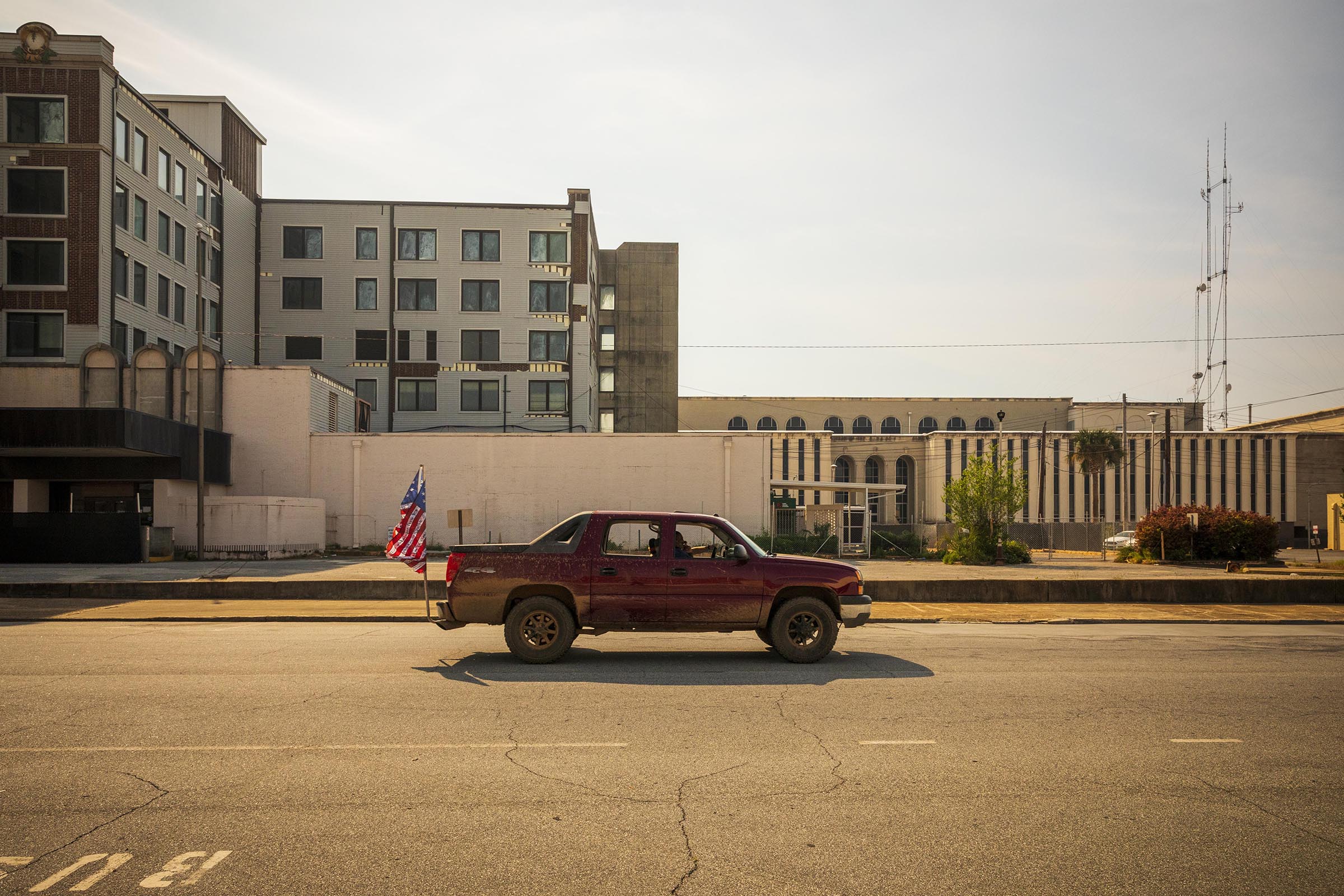
Drive any country road in Georgia during harvest season, and you’ll pass roadside stands emblazoned with the words that could well serve as rural America’s cultural anthem: “Home Grown.”
Whether it’s peaches or potatoes, a diner or a driving range, Americans on farms and ranches and in small towns often support themselves on what they create. They take pride in their ability to take care of themselves and take care of their own.
This trademark self-sufficiency, coupled with an anemic public health infrastructure and limited access to essentials like fresh food and medicine, pose unique threats to rural America as COVID-19 marches relentlessly across the U.S. Without novel approaches to reaching rural residents with information on how to stay healthy and a rapid scaling of public health systems, the disease may hit even harder in rural areas than it has in cities.
Dougherty County, Georgia, about 40 miles from where I live in Plains, is a cautionary tale. As of April 21, the County (population 88,000) reported more than 1,440 positive COVID tests and 103 deaths from the virus or its complications, according to state tracking, rivaling case counts in large, densely populated cities and making Dougherty’s largest city, Albany (population 57,000), a COVID-19 hotspot. Understanding what is happening in Albany is all the more urgent, as Georgia sets to reopen in the coming days. What are the rural realities that risk more Dougherty Counties, and how do we prevent it?
First, rural Americans are self-sufficient because they have to be: many live far from supermarkets, pharmacies, and health clinics or hospitals, and have fewer choices when it comes to where to go. Where I live we have one convenience store. In normal times, its narrow aisles and few checkouts are packed. There is no curbside pick-up; and no home delivery. That limits the practicality of social distancing or stay at home orders, when the only option is forced contact, or going without. The closest option for a shopping strip , about 40 minutes away in Albany. Anything else is over an hour’s drive. More than half the counties in America have no intensive care beds.
Second, there is little or no public health infrastructure in much of rural America. Urban areas often have large, well-established public health departments that can manage activities like disease surveillance, contact tracing, and population-based analysis of a spreading virus and its impacts. The New York City Department of Health and Mental Hygiene has an annual budget of $1.6 billion and more than 6,000 employees throughout the five boroughs. According to the most recent Dougherty County budget, nothing was spent on epidemiology.
And it’s not just public health infrastructure: most of rural America is without the tertiary care hospitals, intensive care units and other specialized services needed to treat those who become gravely ill, and even county or regional hospitals and health clinics are often small, under resourced, and far away. It is far more likely that rural Americans with symptoms will opt to tough it out at home, and only once very sick, seek care.
Third, there are few local news and information sources. For this part of southwest Georgia, there are two television markets, two hours apart. This leads first and foremost to inconsistent information on what is happening and how families can protect themselves. It’s hard to figure out critical facts, and obscures what is happening “elsewhere” from what is happening here. Add to that a pervasive distrust of both media and hospitals, particularly, in the latter case, among communities of color, and you’ve compromised two life lines in a pandemic: information and medical treatment.
Business leaders have observed that the chaos and disruption of the present moment is one in which innovation can flourish as people find workable solutions. That’s a great guide for what leaders in rural states and counties can do – right now – to help slow the spread of the virus. They can:
This virus does not recognize geographic or economic boundaries, and it may punish, rather than reward, the traditionally self-sufficient. Let’s lend them a homegrown hand.
More Must-Reads from TIME
- Cybersecurity Experts Are Sounding the Alarm on DOGE
- Meet the 2025 Women of the Year
- The Harsh Truth About Disability Inclusion
- Why Do More Young Adults Have Cancer?
- Colman Domingo Leads With Radical Love
- How to Get Better at Doing Things Alone
- Michelle Zauner Stares Down the Darkness
Contact us at letters@time.com